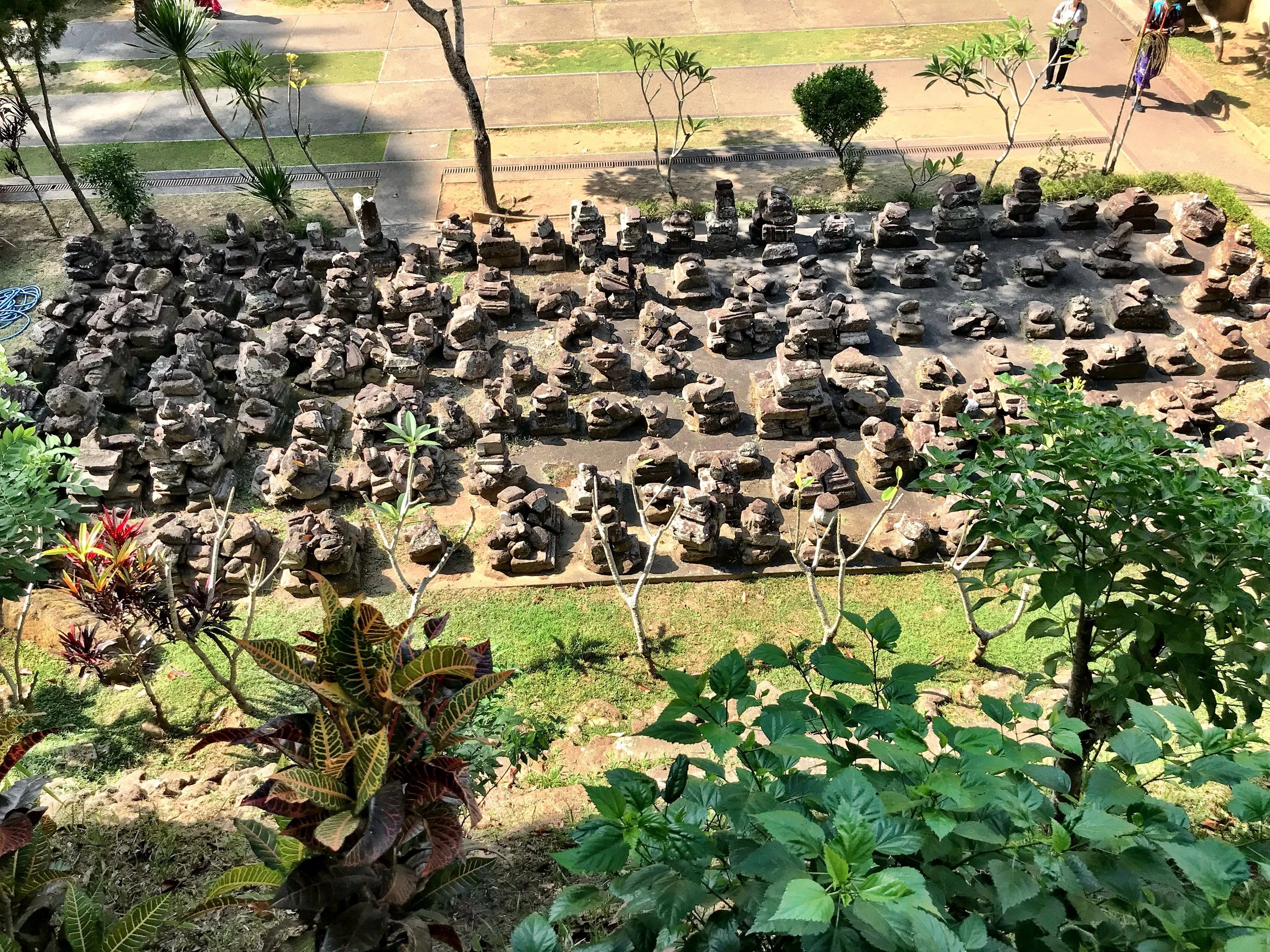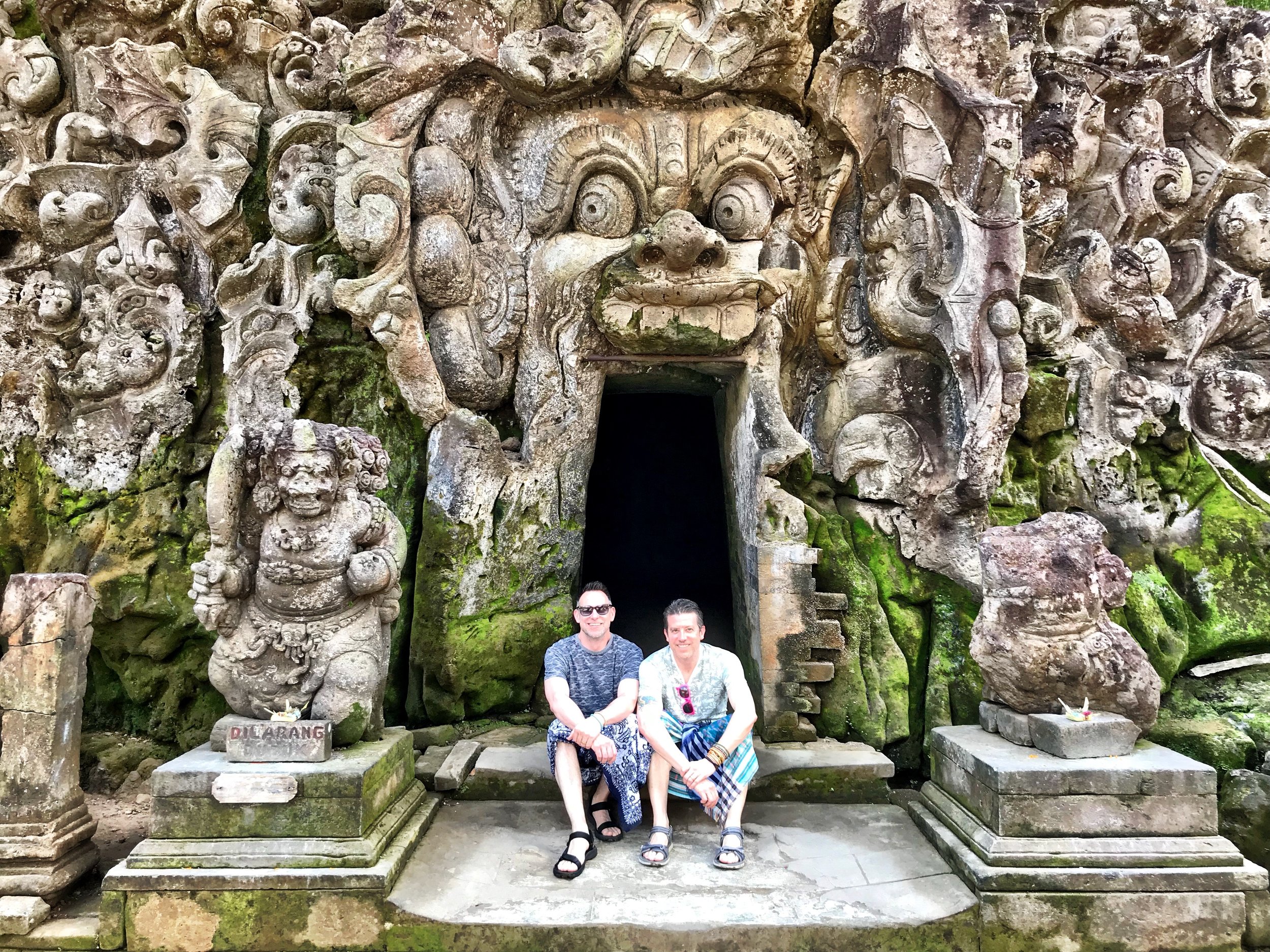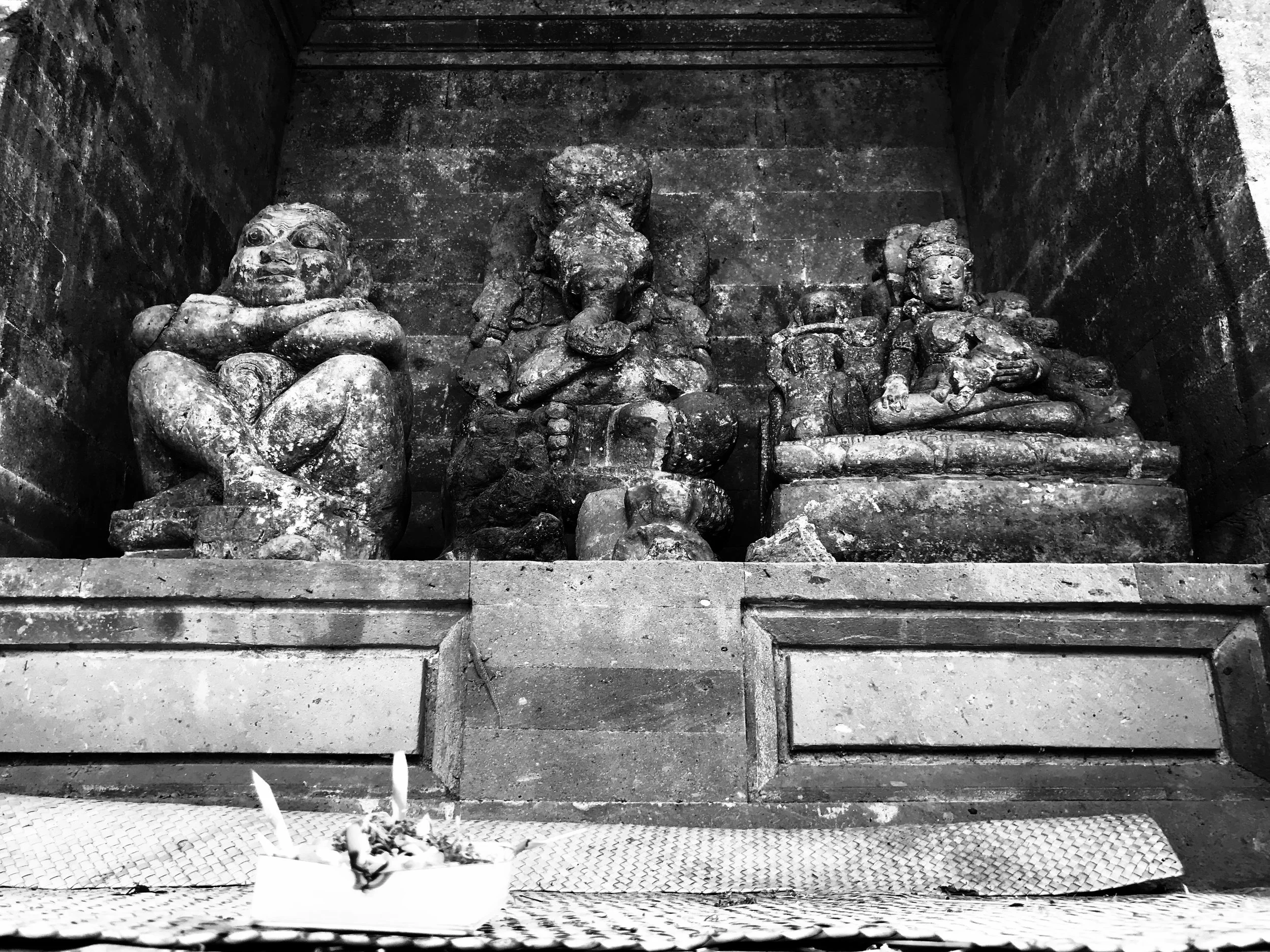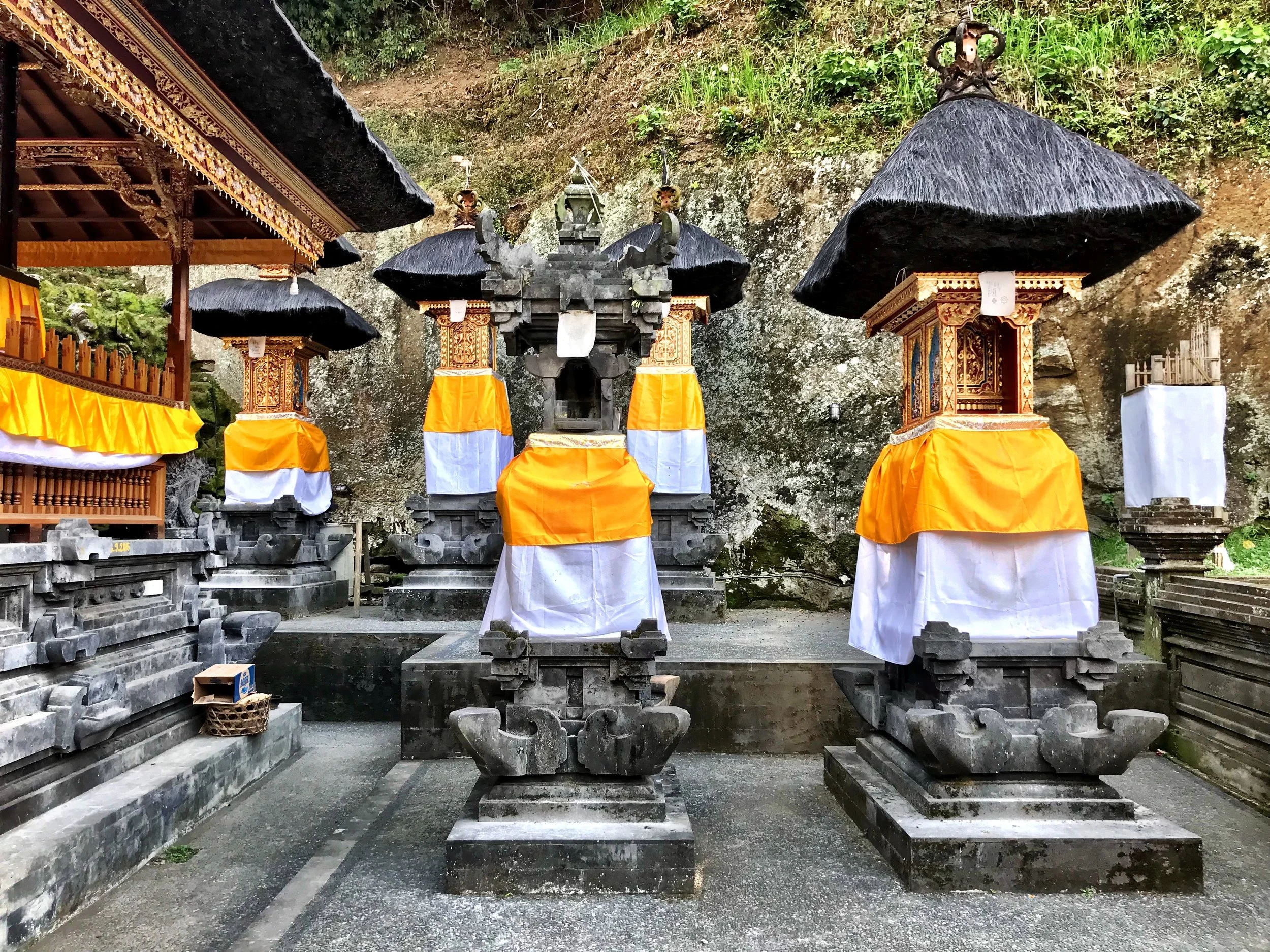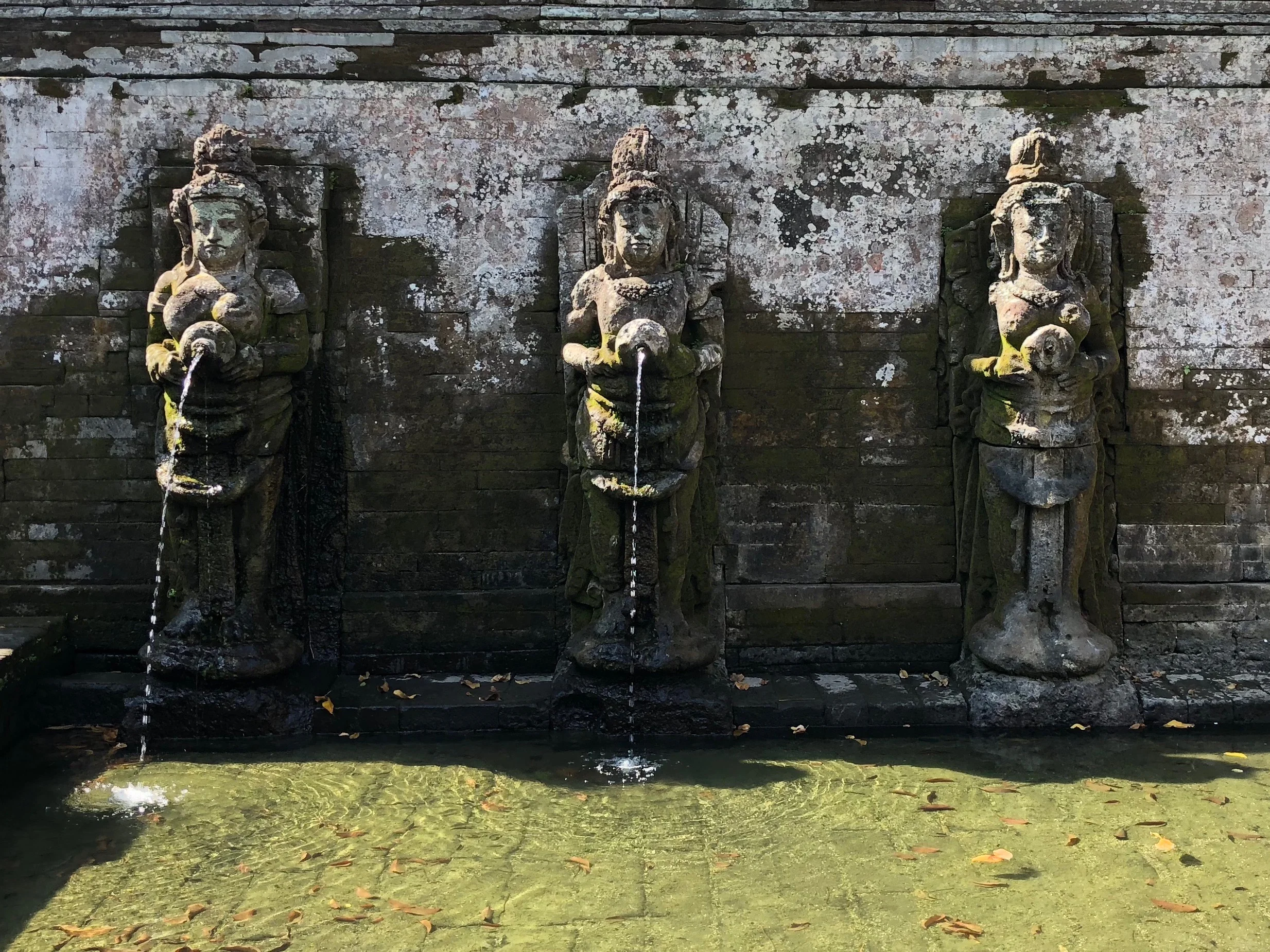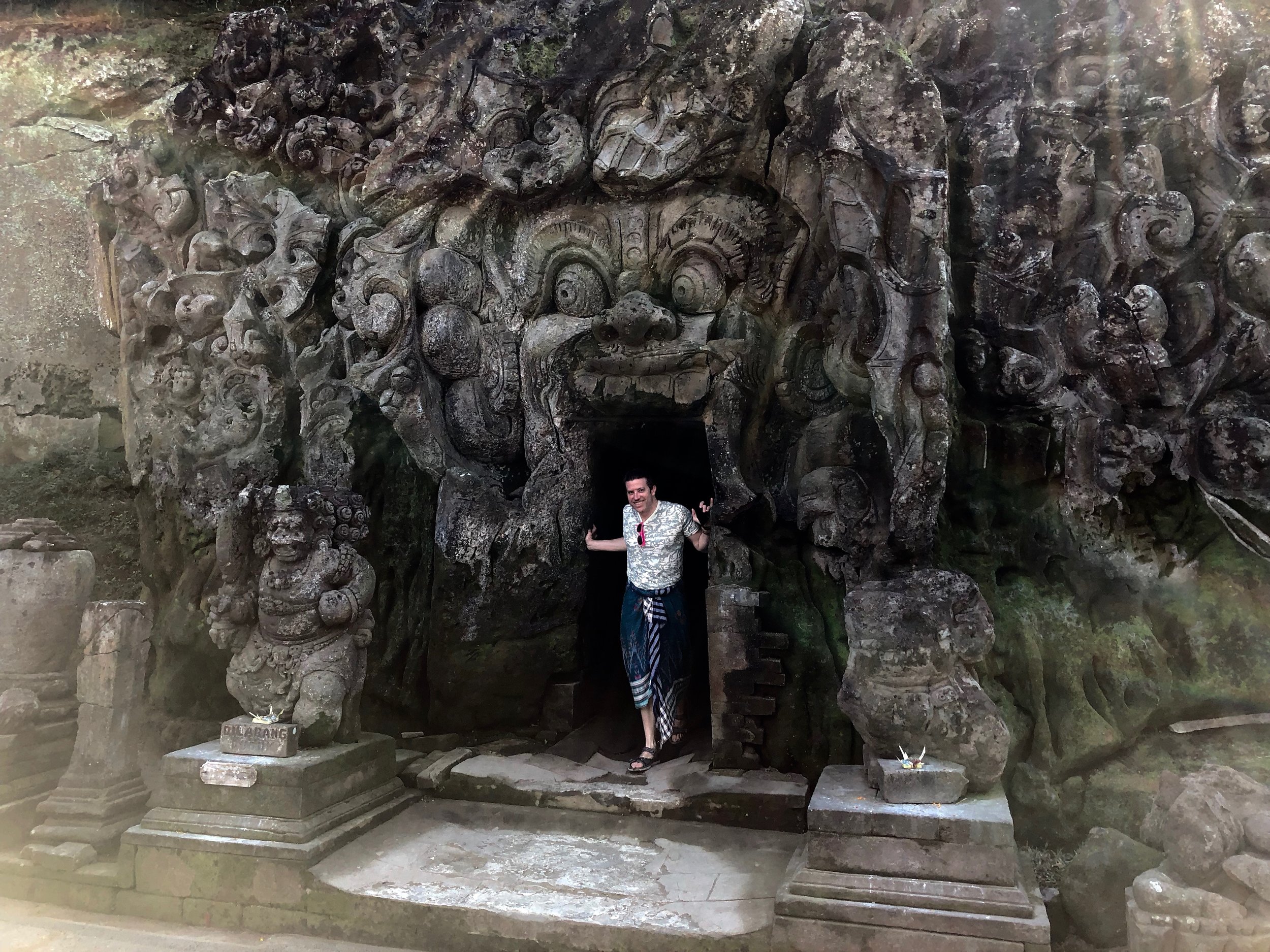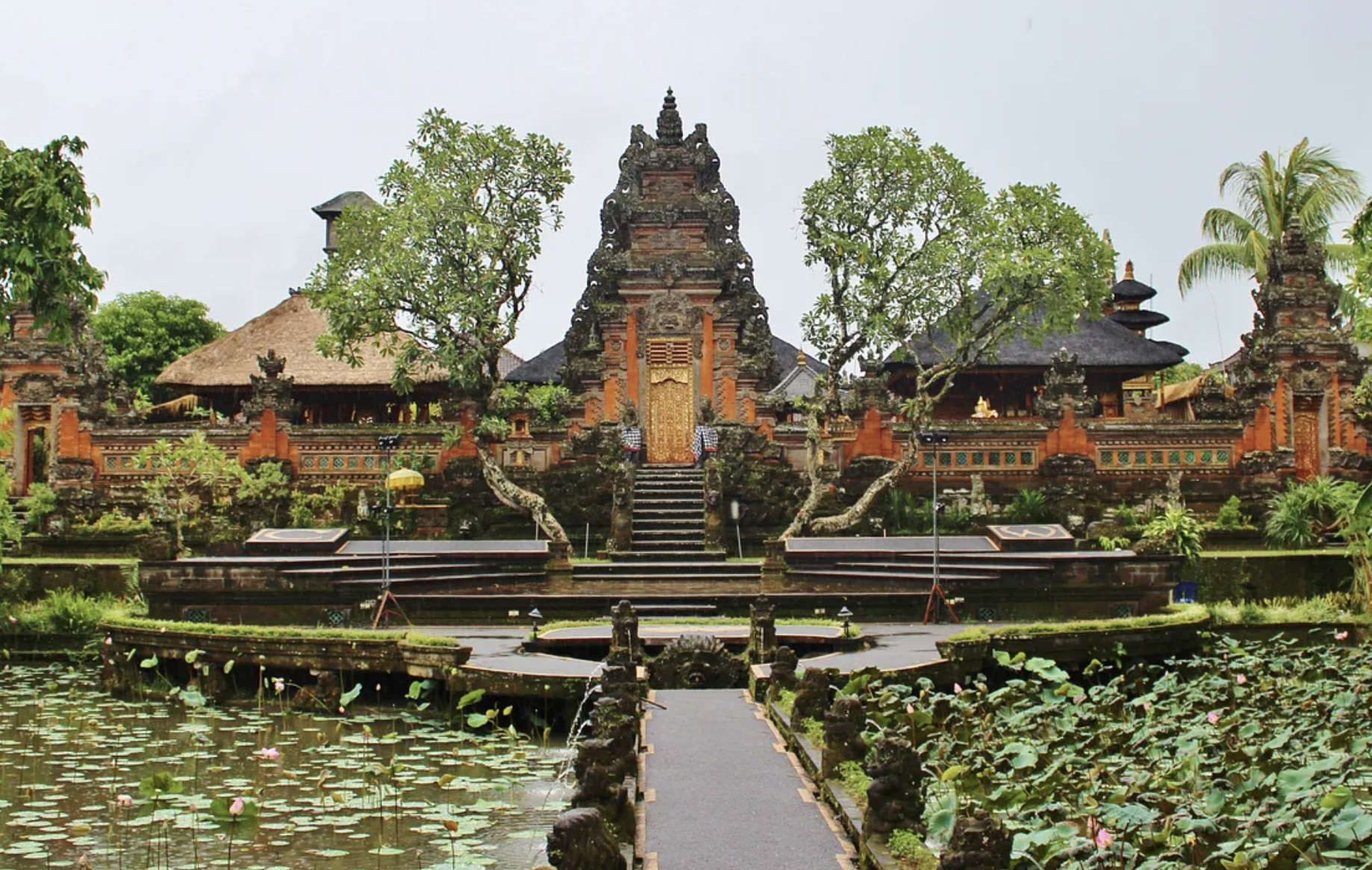The so-called Elephant Cave has an iconic and demonic gaping cave mouth.
When staying in Ubud, make a quick stop to see the monster mouth at Goa Gajah
Balinese words can be so fun to pronounce. You’ve got the water palaces of Klungkung and Tirta Gangga. And just outside of Ubud is a small temple complex called Goa Gajah that dates from the 9th to 11th centuries.
Turns out Goa Gajah has been mistranslated to Elephant Cave, but you won’t find even the remotest hint of a pachyderm anywhere on the small temple complex — aside from a stone statue of the elephant-headed Hindu god Ganesh inside the cave. And, perhaps, the tusk-like fangs that adorn the demonic mouth that forms the cave entrance.
“Those bulging eyes and elongated mouth are a familiar sight in Indonesian temple architecture.”
Flights of stairs lead down to the Goa Gajah complex
The first thing you’ll come across are these ruins
Goa Gajah’s a good stopover to pair with other sites. Excavated in 1954, there are a few buildings in the complex, but it’s really all about the giant mouth cave. Wait for the tourists to clear out, snap the money shot — and you’ll be good to go.
Those bulging eyes and elongated mouth stretching into an entrance are a familiar sight in Indonesian temple architecture. As scary as they look, they’re depictions of Bhoma, a nature god who symbolically cleanses visitors as they enter the most sacred part of holy sites.
What mysteries await Duke and Wally inside the Elephant Cave?
Inside the cave, a narrow T-shaped passageway forks to the left and right, the walls blackened from incense smoke. You can make out small niches in the darkness, some with worn-away statues, including a trio of phallic linga wearing black, white and red skirts. The adorable palm-woven square offering baskets I love so much are placed at the base of the statues.
Inside the cave are three phallic linga in honor of the Hindu deity Shiva the Destroyer
The only elephant you’ll see at the Elephant Cave is this statue of Ganesha
Statues fill a niche. Compared to other holy sites on Bali, Goa Gajah is quite small
At the back of the complex are colorfully decorated shrines
It’s thought that Buddhist monks would meditate in the quiet confines of the cave.
The other notable site at Goa Gajah is the bathing pool, where water pours from the urns held by statues of busty Hindu divine spirits. The holy site was chosen because it’s the spot where two rivers converge.
Female Hindu spirits form the fountains
Wally bathes in the holy water
Get to Goa Gajah as early as possible to avoid the inevitable tourist buses that show up later in the day. It’s a fun place to visit, and you can be in and out in about half an hour. –Wally
Goa Gajah
Ubud, Bedulu
Blahbatuh
Kabupaten Gianyar
Bali, Indonesia



